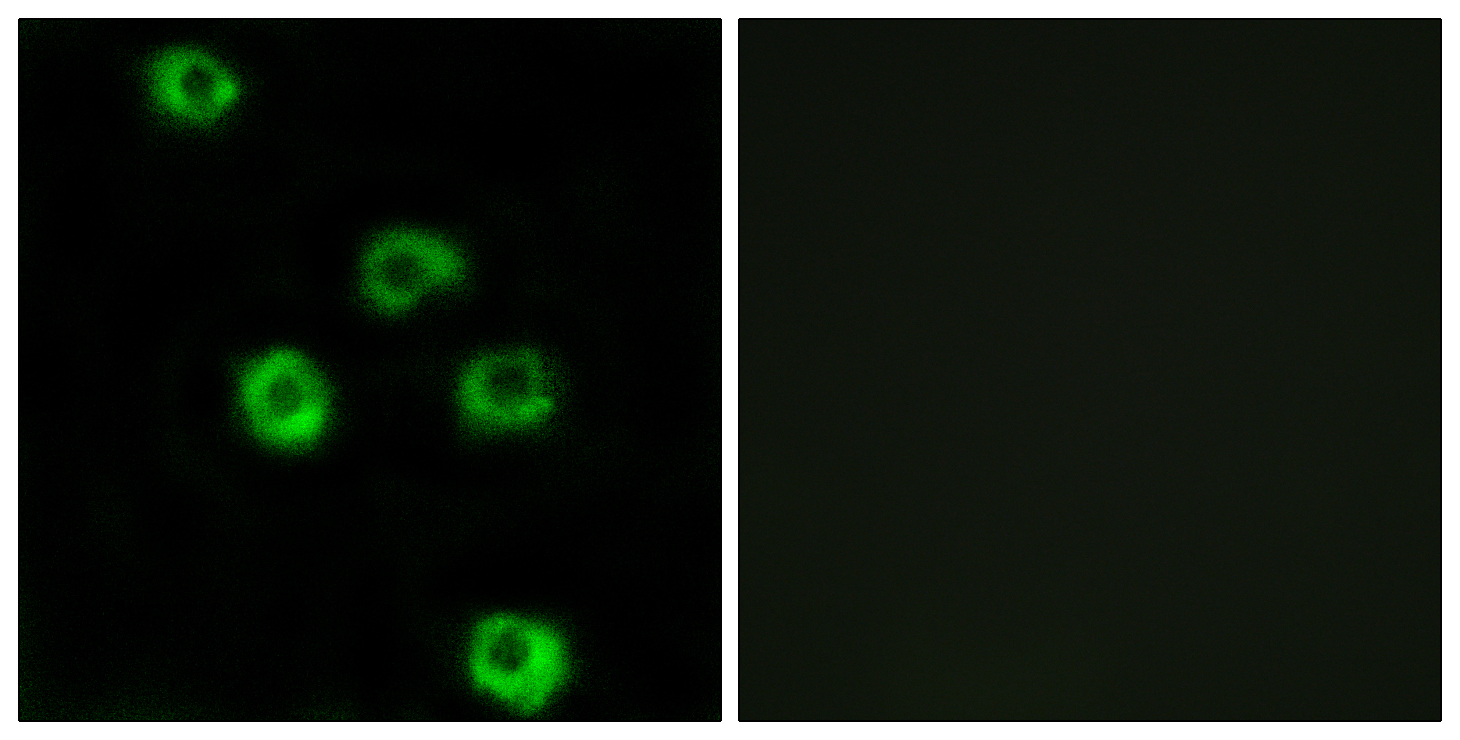Latrophilin-2 Polyclonal Antibody
- Catalog No.:YT2542
- Applications:IHC;IF;ELISA
- Reactivity:Human;Mouse;Rat
- Target:
- Latrophilin-2
- Gene Name:
- LPHN2
- Protein Name:
- Latrophilin-2
- Human Gene Id:
- 23266
- Human Swiss Prot No:
- O95490
- Mouse Swiss Prot No:
- Q8JZZ7
- Rat Gene Id:
- 171447
- Rat Swiss Prot No:
- O88923
- Immunogen:
- The antiserum was produced against synthesized peptide derived from human LPHN2. AA range:551-600
- Specificity:
- Latrophilin-2 Polyclonal Antibody detects endogenous levels of Latrophilin-2 protein.
- Formulation:
- Liquid in PBS containing 50% glycerol, 0.5% BSA and 0.02% sodium azide.
- Source:
- Polyclonal, Rabbit,IgG
- Dilution:
- IHC 1:100 - 1:300. IF 1:200 - 1:1000. ELISA: 1:5000. Not yet tested in other applications.
- Purification:
- The antibody was affinity-purified from rabbit antiserum by affinity-chromatography using epitope-specific immunogen.
- Concentration:
- 1 mg/ml
- Storage Stability:
- -15°C to -25°C/1 year(Do not lower than -25°C)
- Other Name:
- LPHN2;KIAA0786;LEC1;LPHH1;Latrophilin-2;Calcium-independent alpha-latrotoxin receptor 2;CIRL-2;Latrophilin homolog 1;Lectomedin-1
- Molecular Weight(Da):
- 163kD
- Background:
- This gene encodes a member of the latrophilin subfamily of G-protein coupled receptors. The encoded protein participates in the regulation of exocytosis. The proprotein is thought to be further cleaved within a cysteine-rich G-protein-coupled receptor proteolysis site into two chains that are non-covalently bound at the cell membrane. Alternative splicing results in multiple transcript variants. [provided by RefSeq, Jul 2014],
- Function:
- function:Calcium-independent receptor of low affinity for alpha-latrotoxin, an excitatory neurotoxin present in black widow spider venom which triggers massive exocytosis from neurons and neuroendocrine cells. Receptor propably implicated in the regulation of exocytosis.,PTM:Proteolytically cleaved into 2 subunits, an extracellular subunit and a seven-transmembrane subunit.,similarity:Belongs to the G-protein coupled receptor 2 family. LN-TM7 subfamily.,similarity:Contains 1 GPS domain.,similarity:Contains 1 olfactomedin-like domain.,similarity:Contains 1 SUEL-type lectin domain.,subunit:Forms a heterodimer, consisting of a large extracellular region (p120) non-covalently linked to a seven-transmembrane moiety (p85).,tissue specificity:Expressed very widely in all normal tissues tested. Expression is variable in tumor cell lines, apparently elevated in some lines and absent or markedly r
- Subcellular Location:
- Membrane ; Multi-pass membrane protein .
- Expression:
- Expressed very widely in all normal tissues tested. Expression is variable in tumor cell lines, apparently elevated in some lines and absent or markedly reduced in others.
- June 19-2018
- WESTERN IMMUNOBLOTTING PROTOCOL
- June 19-2018
- IMMUNOHISTOCHEMISTRY-PARAFFIN PROTOCOL
- June 19-2018
- IMMUNOFLUORESCENCE PROTOCOL
- September 08-2020
- FLOW-CYTOMEYRT-PROTOCOL
- May 20-2022
- Cell-Based ELISA│解您多样本WB检测之困扰
- July 13-2018
- CELL-BASED-ELISA-PROTOCOL-FOR-ACETYL-PROTEIN
- July 13-2018
- CELL-BASED-ELISA-PROTOCOL-FOR-PHOSPHO-PROTEIN
- July 13-2018
- Antibody-FAQs
- Products Images

- Immunofluorescence analysis of COS7 cells, using LPHN2 Antibody. The picture on the right is blocked with the synthesized peptide.

- Immunohistochemistry analysis of paraffin-embedded human breast carcinoma tissue, using LPHN2 Antibody. The picture on the right is blocked with the synthesized peptide.



